The Five Closest U.S. Presidential Elections
In racing, whether horse or auto or foot, they call it a photo finish. That’s a result that’s so close that it’s almost impossible to discern with the naked eye, necessitating careful examination of a still picture to determine the winner. While you can’t resolve an election with a simple photo, history is loaded with contests that have been, at many points, too close to call. Though the rule of law and an orderly transition have been the norms in the United States since its inception, that’s not to say that arriving at a winner hasn’t on occasion been a rocky or contentious ordeal. With that in mind, here are the five closest presidential elections in the history of the United States.
Before digging in, one acknowledgement that you have to make is that the election is decided by the quirk of all quirks, the electoral college. The electoral college’s votes decide the outcome of the election, regardless of the outcome of the popular votes; though most presidential elections have “matched up” in terms of who won both the popular and electoral majorities, there have been five separate occasions when the “winner” lost the popular vote but was nevertheless conferred the presidency by the electoral college. Since the college is the final arbiter of victory, this list will be concerned with the closet elections in terms of the college; if you’re curious about the five closest in terms of the popular vote, those were: Kennedy over Nixon, 1960 (popular margin of 500,000 votes); Garfield over Hancock, 1880 (7,368 votes); Gore over Bush, 2000 (Gore had 500,000 more votes, but lost via the electoral college); Tilden over Hayes, 1876 (if you’re saying you don’t remember a President Tilden, you’re right; Tilden’s 250,000 more popular votes couldn’t tip Hayes’s electoral victory); and John Quincy Adams over Andrew Jackson (just wait).
So then, here are the closest presidential elections in terms of the electoral college.
5. Woodrow Wilson vs. Charles Evans Hughes (1916)
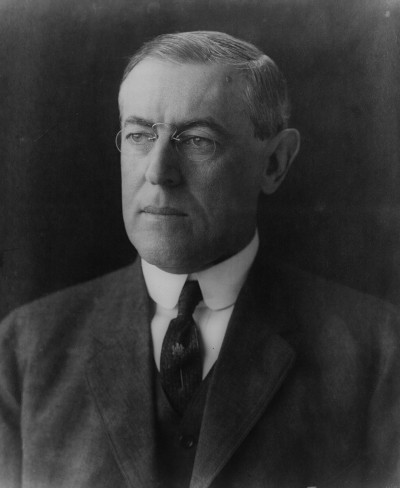
Hughes was the former Republican governor of New York and a Supreme Court justice, and Wilson was the incumbent president. Wilson campaigned heavily on the fact that he had thus far kept the U.S. out of World War I. Ultimately, the desire to keep America out of the war proved to be too strong a force for Hughes to overcome. Wilson received 277 electoral votes to Hughes’s 254. In a historic bit of irony, the U.S. was fully immersed in World War I by April of the following year.
4. John Adams vs. Thomas Jefferson (1796)
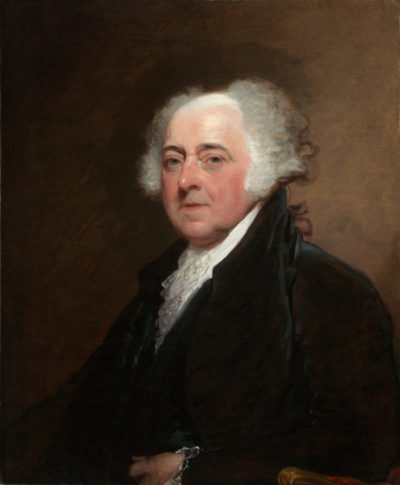
Adams and Jefferson had a complicated, sometimes fiery, relationship. They were friends in the Continental Congress, served under first president George Washington together (with Adams as vice president and Jefferson as secretary of state), and later became bitter political rivals. Though they eventually mended fences and had years of correspondence with one another before dying on the same day (July 4, 1826), the 1796 election was one of their first heated moments of competition. Washington had the opportunity to run for another (third) term, but opted out. Adams and Jefferson both ran with running mates, but by a quirk of the rules that would later be altered in 1804 by the 12th Amendment, electors of the electoral college could vote for each person separately regardless of running mate, giving Adams 71 votes and Jefferson 68. By the rules as they stood, Adams became president, and his opponent became his vice president.
Honorable Mention: Thomas Jefferson vs. John Adams (1800)
This doesn’t quite count because of its overall strangeness, and it’s a situation that wouldn’t happen again today due to rules updates and the 12th Amendment. In a rematch of 1796, Jefferson and Adams ran against one another. However, this time there were formalized tickets, and Jefferson ran with Aaron Burr, while Adams had Charles Pinckney as his running mate. The rules being what they were, electors could cast votes for the individuals, rather than the ticket, so it ended up that Jefferson and Burr were tied with 73 electoral votes. That led to the election being decided in the House of Representatives, with Alexander Hamilton famously influencing the vote for Jefferson (the events of the election were described, albeit in a somewhat fictionalized manner, in “The Election of 1800” in Hamilton: An American Musical).
3. George W. Bush vs. Al Gore (2000)
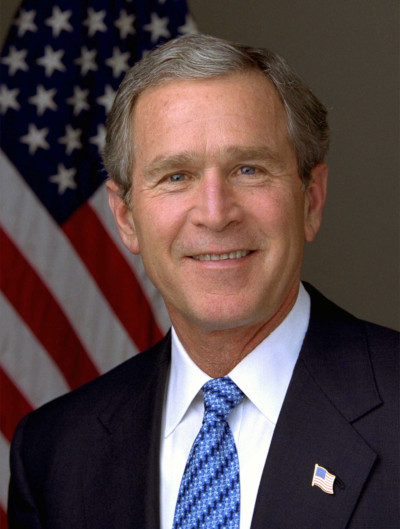
We’ve already established that Gore won the overall popular vote. Of course, it all comes down to the electoral side. At issue was the fate of Florida’s 25 electoral votes, which would be the tipping point for either candidate. Things were so close that Gore called Bush to concede, and then took his concession back. Florida went into a statewide machine recount, as the popular vote would determine the disposition of the electoral vote; Gore also asked for a manual recount in four crucial counties. The Bush campaign sued to stop the recount, which triggered a run of decisions and appeals that went up to the Supreme Court. The Supreme Court ordered the recount stopped by December 12; at the stoppage, Bush was ahead by 537 votes. Florida’s electoral votes went to Bush, and he became president by a margin of 271 to 266.
2. Rutherford B. Hayes vs. Samuel Tilden (1876)
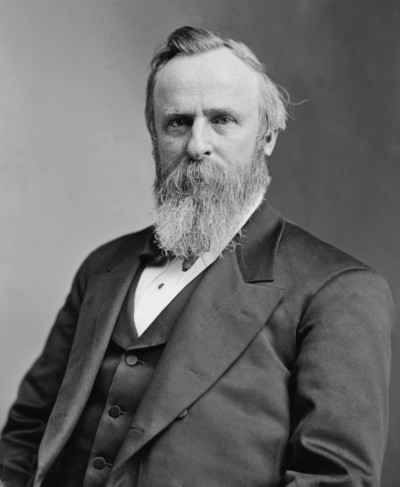
This would be the closest election (in fact, the Post once called it the “worst election”) if it weren’t for the unprecedented action that followed in the Number One slot. The initial electoral count showed Tilden ahead of Hayes by a margin of 184 to 165. The 20 votes of Oregon, Florida, South Carolina, and Louisiana remained in dispute, with both sides declaring victory. Wheeling and dealing led to an agreement that’s called the Compromise of 1877; the states offered their electoral votes to Hayes if he would essentially end Reconstruction and withdraw remaining Union troops from the South. The deal was struck, and Hayes defeated Tilden by a single electoral vote, 185 to 184.
1. 1824: John Quincy Adams vs. Andrew Jackson
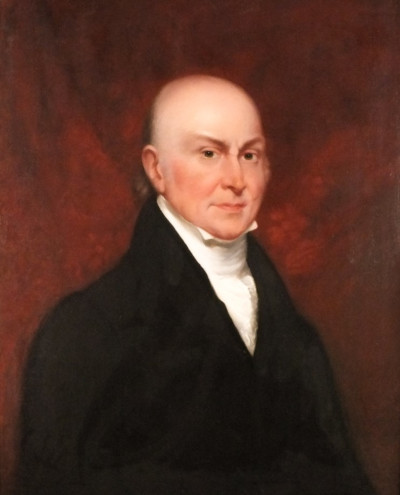
Going into 1824, there were four proper candidates: Secretary of State (and son of John Adams) John Quincy Adams, Tennessee Senator Andrew Jackson, Secretary of the Treasury William Crawford, and House Speaker from Kentucky, Henry Clay. Vice presidential candidates were voted on separately; in fact, Clay and Jackson would both receive votes in the category. The field of four candidates split the electoral vote; while Jackson initially had the most, he did not have enough for the electoral threshold. The breakdown was Jackson with 99, Adams with 84, Crawford with 41, and Clay with 37. With no majority winner, the decision then went to the House of Representatives, where each state would get one vote agreed upon by their reps. The 12th Amendment limited the field to three, so Clay was out. However, Clay, who hated Jackson, actively worked to get representatives from areas where he earned votes to support Adams. Adams won 13 states, and the presidency; Jackson finished with 7, and Crawford, 4. Jackson was enraged, as he had won the popular vote and the most electoral votes, but still lost. Making matters worse, Adams appointed Clay to secretary of state. Jackson would allege corruption, making it a centerpiece of his campaign; it helped him ride to victory in his rematch with Adams in 1828.
Featured image: andriano.cz / Shutterstock
25 James Bond Films, Ranked
Editor’s note: This article was updated in November 2021 to include the latest Bond movie, No Time to Die.
No Time to Die, the 25th 007 film, was set to open this month, after two pandemic-induced delays. Well, those plans went out the window, again because of COVID-19, and we won’t see the new adventures of Bond, James Bond, until April 2021. But I thought fans of the movies would still like to celebrate Bond this week — especially in light of the death of the greatest Bond, Sean Connery — so I’ve ranked all of the films from worst to best (not including the original Casino Royale from 1967 or 1983’s Never Say Never Again because they’re not part of the official Bond canon).
25. Spectre (2015)
Uploaded to YouTube by Sony Pictures Entertainment
To be honest, there are worse Bond movies, quality-wise (like the next four on this list), but I give Spectre the nod for worst because it’s illogical, silly, and frustrating, with a needless plot involving arch-nemesis Blofeld that makes no sense (and practically ruins the other Daniel Craig-era Bond films). He’s Bond’s…foster brother? And they give him an alias just because it will trick viewers but in reality means nothing to Bond or anyone else in the film? Sigh.
I don’t know why the most recent Bond movies feel the need to give Bond either an origin story or an “I quit” story almost every time but it’s getting ridiculous. It also has a boring car chase and one of the worst theme songs too.
(They even screw up the film’s title. It should be SPECTRE.)
24. A View to a Kill (1985)
Uploaded to YouTube by MyDeathlok
At this point, Roger Moore could barely walk let alone run or fight bad guys. It was his final Bond film. Christopher Walken is a great villain though. Too bad the movie that surrounds him is one of the worst.
23. Moonraker (1979)
Uploaded to YouTube by Movieclips Classic Trailers
Because of the success of movies like Star Wars, Bond had to travel to outer space, which tells you all you need to know about Moonraker. It has a good opening scene though, where Bond is pushed out of a plane without a parachute.
22. Live and Let Die (1973)
Uploaded to YouTube by Movieclips Classic Trailers
Moore’s first 007 outing just isn’t much fun, with a dreary plot involving drugs and voodoo. The best thing about it is the theme song by Paul McCartney and Wings.
21. Die Another Day (2002)
Uploaded to YouTube by Movieclips Classic Trailers
Pierce Brosnan’s final Bond movie has a great opening sequence, but it also has Madonna as a fencing instructor, CGI action scenes that look more like a video game, and a freakin’ invisible car.
20. The Man with the Golden Gun (1974)
Uploaded to YouTube by Movieclips Classic Trailers
Christopher Lee could have been the greatest Bond villain of all-time; too bad the rest of the movie is rather lame. The best thing about it is a spectacular car stunt I still don’t know how they pulled off.
19. Tomorrow Never Dies (1997)
Uploaded to YouTube by Movieclips Classic Trailers
This has one of my favorite opening scenes — Bond has to steal a plane armed with nuclear bombs — but also one of the worst endings. In between there’s an invigorating action scene with a remote-controlled car in a parking garage, but that’s about it. I don’t believe for one second that Teri Hatcher was the love of Bond’s life.
The story goes that the title was supposed to be Tomorrow Never Lies but the fax with the title was smudged and they misread it. It certainly would have made more sense.
18. The World is Not Enough (1999)
Uploaded to YouTube by Movieclips Classic Trailers
The Brosnan entries all have great opening scenes but then they get worse and worse as the movie goes along. Why is that?
17: The Living Daylights (1987)
Uploaded to YouTube by Movieclips Classic Trailers
Timothy Dalton’s first outing (of only two) isn’t bad, it’s just a little “meh,” even if he is a solid choice after the Moore years. Great soundtrack.
16. Octopussy (1983)
Uploaded to YouTube by Movieclips
There are a couple of good action sequences, and Louis Jourdan is a fun villain, but you should also be aware that during the film, Bond dresses as a clown and swings on a vine like Tarzan.
15. No Time to Die (2021)
Uploaded to YouTube by James Bond 007
The first hour or so of Daniel Craig’s last 007 film is great. The last hour or so is a bit of a drag, like a by-the-numbers video game where a player goes around shooting people in doorways and blowing up things. The movie is too long, even if it is stylishly directed, gorgeous to look at, and has some terrific individual scenes (Ana de Armas completely steals the movie and I’d watch a spinoff franchise featuring her character). This could have been one of the great Bond films, but the movie wants to be EPIC and IMPORTANT and provide closure, and that leads to one of the stupidest endings in the history of pop culture (I won’t spoil it here), so ultimately it doesn’t matter how well-made it is.
14. Diamonds Are Forever (1971)
Uploaded to YouTube by Movieclips Classic Trailers
Connery quit the franchise after You Only Live Twice but was convinced to come back when George Lazenby didn’t return for a second film. And it’s…not bad! Not great, but not bad!
13. Quantum of Solace (2008)
Uploaded to YouTube by Movieclips Classic Trailers
This didn’t get great reviews — maybe people were expecting too much after Casino Royale — but I think it’s the Bond movie that will be looked upon more and more kindly as the years go by, even if the theme song by Jack White and Alicia Keys is horrendous.
12. The Spy Who Loved Me (1977)
Uploaded to YouTube by Movieclips Classic Trailers
This has a nice balance of the serious and the silly, but I feel it has always been a bit overrated.
11. For Your Eyes Only (1981)
Uploaded to YouTube by Movieclips Classic Trailers
Many consider this Moore’s best, because it takes things a little more seriously after all of the goofiness of the ’70’s films. Except for a truly bizarre opening where Bond drops Blofeld down a smokestack, the villain pleading for his life by promising to buy Bond a delicatessen, “in stainless steel!”
10. On Her Majesty’s Secret Service (1969)
Uploaded to YouTube by Movieclips Classic Trailers
Many people consider this the best 007 film. It’s not, but it’s quite good, and Lazenby, a model plucked out of nowhere for the role, is underrated. This is the one where Bond gets married.
Trivia: Lazenby was once married to tennis player/commentator Pam Shriver.
9. Thunderball (1965)
Uploaded to YouTube by Movieclips Classic Trailers
This film is a bit overlong — and there are probably too many underwater scenes — but it’s undeniably fun.
8. You Only Live Twice (1967)
Uploaded to YouTube by Movieclips Classic Trailers
When you think of big, epic Bond adventures, this is the movie you’re thinking of, with its outrageous villain’s-lair-hidden-in-a-volcano set.
7. Dr. No (1962)
Uploaded to YouTube by Movieclips Classic Trailers
The first 007 big-screen adventure, more low-key and with no opening theme song but a great introduction to the character and his world. Oh, and it has this iconic scene.
6. From Russia with Love (1963)
Uploaded to YouTube by Movieclips Classic Trailers
This is also often cited as the best Bond movie, and it’s not a bad choice. It’s a serious spy story with just enough crazy elements (Rosa Klebb and her poison-tipped shoes) to make it classic fun. It includes the first appearance of Blofeld (called Number 1 here) and a great scene on a train where Bond fights henchman Robert Shaw.
5. License to Kill (1989)
Uploaded to YouTube by Movieclips Classic Trailers
The most underrated 007 film. Some people think it’s too action-oriented (?), too gritty (!), too ’80’s. Those people are nuts. It’s actually one of the more satisfying entries in the series, as Bond infiltrates a drug cartel to avenge the murder of a friend’s wife.
4. Goldeneye (1995)
Uploaded to YouTube by Movieclips Classic Trailers
Brosnan’s first Bond film is his best Bond film, a stylish and fun adventure that feels both ’60’s-ish and ’90’s-ish, a throwback to the Connery era and a new vision for the future. I’ve seen many 007 films in the theater, but this is still the only one where the audience actually applauded after a scene (where Bond flies off the cliff and takes control of a plane).
By the way, this movie inspired one of the greatest video games of all-time.
3. Casino Royale (2006)
Uploaded to YouTube by Movieclips News
Daniel Craig’s first Bond film has not one but two great opening scenes, a black-and-white meeting with another agent that shows how Bond got his 007 status, and a terrific scene where Bond chases a rather athletic bad guy through a construction area. This is a return that makes you forget all about Brosnan’s last film.
2. Skyfall (2012)
Uploaded to YouTube by Sony Pictures Entertainment
I didn’t think the makers of the Bond movies could top Craig’s first film, but they did it with Skyfall. It’s really a tie between the two. If they had decided to end the Bond series for some reason, this would have made for a great send-off. It introduces Moneypenny and Q, gives Bond a “comeback” story and emotional scenes with Judi Dench, and is exquisitely shot and directed.
1. Goldfinger (1964)
Uploaded to YouTube by Movieclips Classic Trailers
This is number one on most lists for a reason, because it really sets up all of the Bond elements for the rest of the series: the big theme song, the evil villain with the master plan, the henchman Bond has to fight, the sexy girl with the crazy name (Pussy Galore!). A film so good you don’t care how ridiculous it is (I’ve seen it 20 times and I still don’t get why Goldfinger kills the mob guys) or how many mistakes there are.
Featured image: RichartPhotos / Shutterstock
The Worst Movie Musicals Ever
The history of the movie musical comes packed to the rafters with classics. You’ve got Singin’ in the Rain and The Sound of Music. There’s Cabaret and West Side Story and an armada of Disney films led by Mary Poppins. From The Wizard of Oz to Hedwig and Angry Inch, it’s easy to name beloved films that are powered by amazing music. But, like every other genre, the musical has seen its fair share of sour notes. 40 years ago this week, the critically reviled Xanadu hit theaters. And while people all over the world still enjoy a number of the Olivia Newton-John and ELO songs contained in the film, it stirred up enough dislike as a movie to inspire the creation of the Golden Raspberry Awards. In that spirit, and with full awareness that someone out there probably loves each and every one of these, here are the Worst Movie Musicals Ever.
10. Xanadu (1980)
The trailer for Xanadu (Available on YouTube via YouTube Movies)
Perhaps the biggest problem for Xanadu’s detractors is that its disparate elements just never really hang together. Gene Kelly brings in a classic vibe, and the attempt to blend the ’40s and ’80s is commendable, but seeing Kelly frequently just reminds you how much better old Gene Kelly musicals were. The Greek mythology elements come off as more of a distraction. And frankly, there’s just way too much roller-skating. It’s also hard not to laugh when the nightclub they’ve been creating turns out to look like the set of Solid Gold. Bonus Track: dancer and actress Sandahl Bergman played one of Newtown-John’s Muse sisters two years before she made a big impression in Conan the Barbarian.
9. Cats (2019)
The Cats trailer (Uploaded to YouTube by Movieclips Trailers)
Here’s a caveat: time may move this up the list. Let’s face it: regular Cats is nobody’s favorite musical. Yes, Betty Buckley and Elaine Paige slayed “Memory” on both sides of the Atlantic, but that’s it. The basic story is this cat does this, this cat does that, no one likes the cat that has sex until it’s time to ritually sacrifice her, and so on. (Note to self: A Midsommar musical would be awesome.) But what really sets the film apart is the complete Uncanny Valley-ness of it all. Somehow, Marvel can make a tree and a raccoon into tactile, emotionally believable characters, whereas the unholy mélange of cat and human in Cats look like cut-scenes from the PlayStation I era. It’s just inherently bad. Bonus Track: Taylor Swift only has three words of dialogue.
8. Can’t Stop the Music (1980)
The Can’t Stop the Music trailer (Uploaded to YouTube by Shout! Factory)
It’s the fictionalized origin story of the Village People, starring the Village People! It was also the other half of a double-feature with Xanadu that inspired John J.B. Wilson to create the Golden Raspberry Awards; Can’t Stop the Music was the first winner for Worst Picture. Plot-wise, the movie is a disjointed mess as it tries to follow multiple plotlines, like a romance between Valerie Perrine and then-Bruce Jenner (Jenner’s film debut, roughly 25 years before coming out as trans and taking the name Caitlyn), the struggles of Steve Guttenberg’s songwriter, the recruitment of the six Village People, and more. The only well-known VP song in the film is “Y.M.C.A.;” it appears during a musical number set at the, of course, Y, and features full-frontal male nudity (something that generally never happens in a film not rated R). Bonus Track: The director was Nancy Walker, best known as Rhoda’s mother on The Mary Tyler Moore Show and Rhoda, and character Rosie for 20 years of Bounty paper towel commercials.
7. Grease 2 (1982)
The Grease 2 trailer (Available on YouTube via YouTube Movies)
Producer Allan Carr was a successful producer of films like Grease, a Tony and People’s Choice Award winner, and an agent that discovered talents like Mark Hamill, Michelle Pfeiffer, and Olivia Newton-John. He also produced Can’t Stop the Music, Grease 2, and that career-killing Snow White/Rob Lowe Oscar number, so . . . win some, lose some? You can hardly blame anyone for wanting to follow the insanely successful Grease with a sequel. On the other hand, the original film had the bedrock of the stage musical to build on. And on the other, other hand, it’s just bad. The lone bright spot is Pfeiffer, who had the distinction of being one of the few elements that wasn’t savaged by critics. Bonus Track: Male lead Maxwell Caulfield went on to a different kind of musical immortality as Rex Manning in Empire Records.
6. The Pirate Movie (1982)
It’s the 1980s, so that must mean it’s time for dueling . . . Gilbert & Sullivan adaptations? One uses the original name of the stage musical, The Pirates of Penzance, and the other opts for, simply, The Pirate Movie. One has Kevin Kline, Linda Ronstadt, and Angela Lansbury, and the other stars the guy from The Blue Lagoon. One failed because of a bad business decision, and the other failed because, well, it’s The Pirate Movie. The film starts badly, by shoehorning in a “let’s start in modern day and make it a dream, sort of” premise, and goes more wrong from there. Bonus Track: 1983’s Penzance with Ronstadt was cut off at the knees because Universal tried to simultaneously release it in theatres and pay services; subsequently, many theatre chains boycotted it, destroying its box office chances.
5. Rock of Ages (2012)
The trailer for Rock of Ages (Uploaded to YouTube by Warner Bros. Pictures)
Would you go into a musical thinking that Tom Cruise is going to be the best part? That’s nothing against Cruise, who has proven that he’s literally willing to hang off of a plane to entertain us. But the absence of musical work on his resume turned out to be an advantage, because nobody expected that he’d be that good as hair-metal god Stacee Jaxx. Unfortunately, nothing in the rest of the movie lives up to that. There’s not really even a chance for a transformative breakout hit, as it’s a jukebox musical filled with previously known hits with only one original song. Another strike is that Mary J. Blige doesn’t get a number of her own. Possibly the biggest letdown is that the movie trades the spirit of the stage show (which is, “hey, this brand of rock is kind of silly, but huge fun”) for treating it all like a big goof. If the filmmakers aren’t convinced, then no one else is. Bonus Track: While a number of well-known rockers appear in cameos, so does pop star Debbie Gibson, who hit #4 on Billboard’s Dance Club chart just last year with “Girls Night Out.”
4. Nine (2009)
The Nine trailer (Uploaded to YouTube by Movieclips Classic Trailers)
Nine is the rare case of a movie that gets a ton of award nominations (including four Oscar nods) but ultimately no one seems happy about it. The creative pedigree is astounding. Based on Arthur Kopit and Maury Yeston’s stage musical, which was itself inspired by Federico Fellini’s 8½, the film was written by Michael Tolkin (The Player) and Anthony Minghella (The English Patient) and directed by Rob Marshall (Chicago). It stars Daniel Day-Lewis, Penelope Cruz, Marion Cotillard, Judi Dench, Sophia freaking Loren, Nicole Kidman, Kate Hudson, and Fergie. And yet . . . blah. Maybe it’s because 19 of the original songs were excised. Maybe it’s because the story of a director’s mid-life crisis just didn’t connect with audiences. Maybe it’s not even that bad, but just seems egregious in the face of SO MUCH TALENT going nowhere. Bonus Track: Remarkably, given their status as Italian icons, Loren and Fellini never did a film together, though she did present him with his Honorary Oscar in 1993.
3. From Justin to Kelly (2005)
The Golden Raspberry Awards went in hard on this one, calling it “Worst ‘Musical’ of Our First 25 Years.” Kelly Clarkson won the inaugural 2002 season of American Idol on Fox; Justin Guarini was runner-up. They found themselves contractually obligated to do a movie for 20th Century Fox, and this utterly terrible spring break musical was the result. Sure, we understand that they called Kelly’s character “Kelly,” but her movie last name of Taylor means that she inexplicably and distractingly shares a name with Kelly Taylor of Fox’s 90210 franchise. Much of the plot is a series of contrivances to keep the two leads apart, which makes little sense. It’s really not good. Bonus Track: Clarkson has of course had 28 Hot 100 hits since, and Guarini has stealthily appeared for years as Lil Sweet in an ongoing series of Dr. Pepper commercials.
2. Shock Treatment (1981)
How do you follow the success of The Rocky Horror Picture Show? Apparently, you can’t. It had the original director (Jim Sharman), the original writers (Sharman and Richard O’Brien), the original songwriter (O’Brien), two of the original characters (Brad and Janet, though played by different actors), and several members of the original cast as new characters. But it just doesn’t connect. While the idea of a whole town inside a studio dominated by constantly running TV programming is ahead of its time, it never totally comes off and you constantly wonder as a viewer why O’Brien and Patricia Quinn aren’t just their fantastic Riff Raff and Magenta selves again. Bonus Track: Jessica Harper, who replaced Susan Sarandon as Janet, had the female lead in another frequently panned musical, Phantom of the Paradise; however, she was also the lead in the horror classic Suspiria and appeared in its 2018 remake.
1. The Apple (1980)
The trailer for The Apple (Uploaded to YouTube by Movieclips Classic Trailers)
Apparently 1980 wasn’t exactly the best year to try a musical. Director Menahem Golan co-owned The Cannon Group with his cousin, Yoram Globus. They made some cheesy but popular films, like Breakin’, American Ninja, and Missing in Action. They were also responsible for disasters like Superman IV: The Quest for Peace and the famously bad 1990 version of Captain America that never made it to American theaters. The Apple somehow tries to combine a future version of the Eurovision Song Contest (here, the 1994 Worldvision Song Festival) and a parable of the dangers of the entertainment industry with, wait for it, The Bible. You have analogues for Adam, Eve, and The Devil (Mr. Boogalow, who owns a label, of course). You have variations on temptation scenes (title song The Apple, which includes a sort of tour of Hell with dumb as anything lyrics “It’s a natural, natural, natural desire/Meet an actual, actual, actual vampire”). The climax of the film is The Rapture. Seriously, this is a real movie. Utterly crazy doesn’t even really cover it. But sadly, it’s not an eminently rewatchable kind of crazy. It’s just terrible.
Featured image: (Aleutie / Shutterstock)